- Home
- Cutting Firewood
- Felling a Tree
Felling A Tree
This post may contain affiliate links so I earn a commission.
Felling a tree can be dangerous. There's a reason why logging is one of the most deadly jobs in the world.
Using razor sharp blades on a chainsaw to cut down huge trees that weigh thousands of pounds is a recipe for disaster if you don't know what you're doing.
If you own a chainsaw, chances are you plan on cutting down a tree.
To help prevent accidents from happening, it's important to understand the proper way to cut down a tree and some of the dangers that exist.
How To Cut Down A Tree - Felling A Tree Safely
If you’re thinking about felling a tree on your property, the best thing you can do is sign up for a safety course, like the Game of Logging saw safety training program.

Of course, these classes can be hard to come by, so soaking up all the advice you can find on felling a tree safely is the next best thing.
Here are some step by step tips on how to fell a tree properly.
Suit Up and Invest in the Right Equipment
Take safety seriously when you’re shopping for gear, and make sure you have a hard hat to protect yourself from falling branches (ideally one with earmuffs to protect your ears and a shield to guard your eyes).
You’ll also want some chaps, which will stop the chain if you bump the bar against your leg.
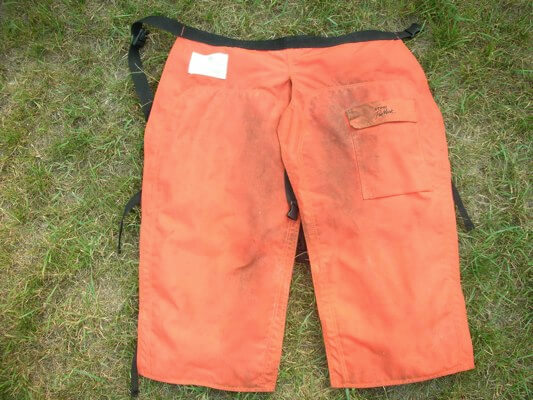
While it’s pretty obvious that you’ll need a chainsaw to cut a tree down, many people neglect another piece of equipment you’ll want to have on hand - falling wedges.
Invest in two plastic felling wedges, which will prevent the likelihood of your saw getting pinched as you cut.
Clear the Cutting Zone and Evaluate the Tree
Next, you’ll want to take a close look at the felling zone.
Give the tree you plan to cut a thorough once- (or twice, or thrice!) over.
You can easily estimate where a tree will land by using the axe handle trick.
Hold the handle of an axe away from your body and shut one eye.
Move toward the tree (or back away from it) until the top of the axe is even to the tree’s top and the bottom of the axe is even to the base.
This should show you approximately where the tree will fall so you can make sure it won’t come head to head with a building, another tree, or some other kind of interference as it falls.
In many cases, you’ll need to clear out a path so that the tree doesn’t hit any brush or other debris as it falls.
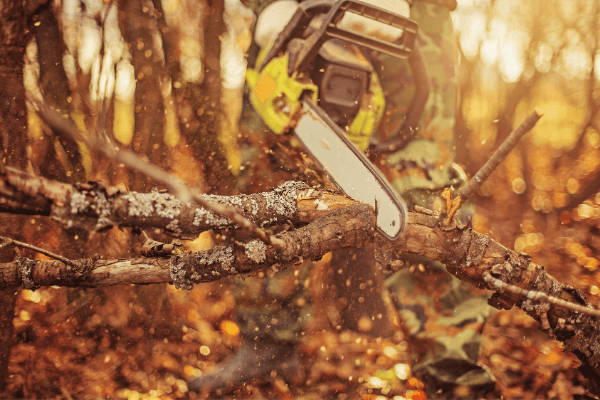
Get rid of any brush around the tree trunk and its two escape routes on the side of the tree opposite of where it will fall (these should be about 45 degrees from each other in opposing directions so you have plenty of options should you need to get away from the falling tree).
Take a good look at your tree.
Do you see any dead branches that are broken but still attached to the tree?
Is the tree leaning in the opposite direction from which you want it to fall?
Are there power lines, buildings, or other structures in the way?
If any of these conditions apply, you will want to skip cutting the tree and call in a professional who has the experience necessary to tackle a more challenging job like this.
Plan, Make, and Cut Your Notch - Felling A Tree
Next, it’s time to consider your notch.
The notch should be about a fifth of the trunk’s diameter and made at 30 and 60 degree angles, with your felling cut eventually meeting the point of the notch.
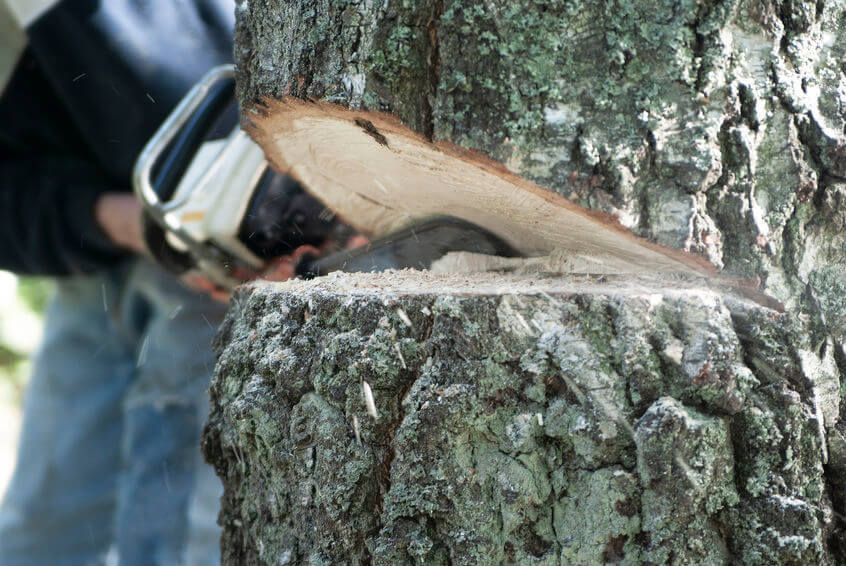
This will create a hinge that will help your tree fall in the appropriate direction.
You will cut your notch on the fall side of the trunk.
Adjust the saw so that it points toward the fall direction, with the part on the tree where the bark touches the bar serving as the middle of the notch.
You may want to lay out your notch with a marking crayon before you cut so you know exactly where to position yourself once you start working.
To cut your notch, make the top cut first and then work on the bottom.
When you make the bottom cut, you may need to adjust the speed of your throttle with your thumb.
Your wedge should fall out of the notch as you work.
Make Your Felling Cut
Now it’s time to make your felling cut.
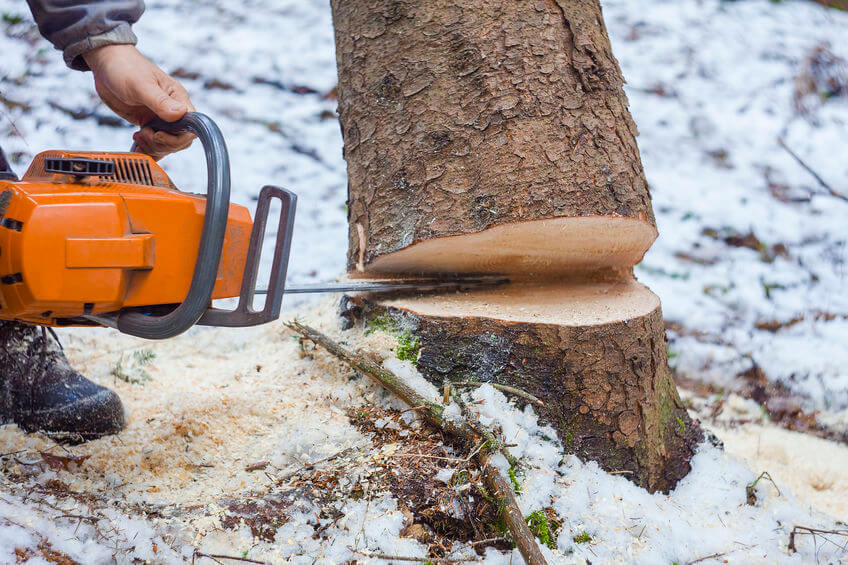
You’ll score a line that connects the notch on both sides to give you an idea of where to cut.
Your back cut should be parallel with the notch’s apex.
Once your tree starts to tip, remove the saw, set your chain brake, and walk away - don’t run, and don’t take your eye off the falling tree in case you need to react if it doesn’t fall the way you planned.
10 Tips For Felling A Tree
Whether you use the trees for firewood or are just clearing some land, following a few basic safety rules can help save your life.
1. Wear protective equipment and think chainsaw safety!
Protective chaps, gloves, steel toe boots and safety glasses are essential for keeping you safe while felling a tree.
2. Look at the tree to see which way it naturally wants to fall.
Is it leaning towards one direction? Are most of the branches on one side of the tree?
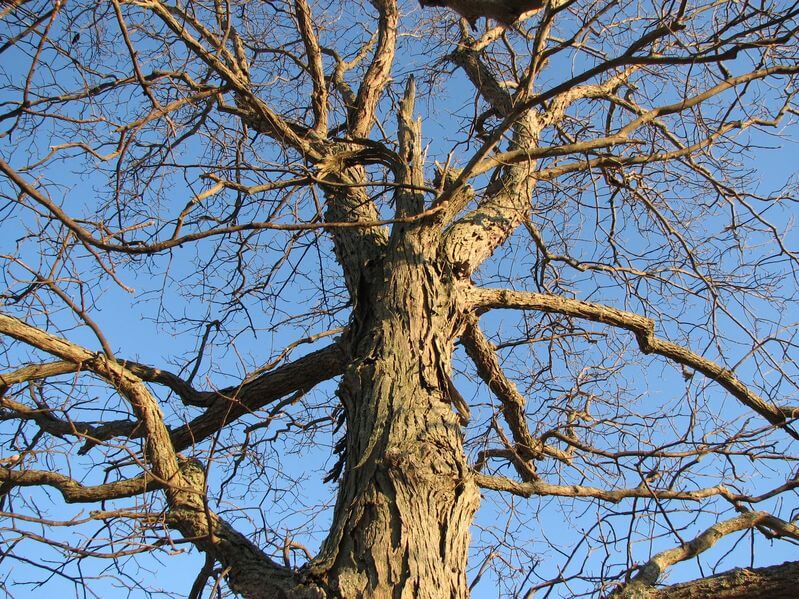
3. Look up! Loose or busted branches called "widow makers" high in the tree can fall causing injury or death.
Always check the tree before cutting to see if any loose branches are waiting to fall down.
4. Which way is the wind blowing? A strong gust of wind can make felling a tree difficult and dangerous.
Cut firewood when the winds are calm. A blowing tree can be unpredictable and it's never safe to cut down a tree in strong winds.
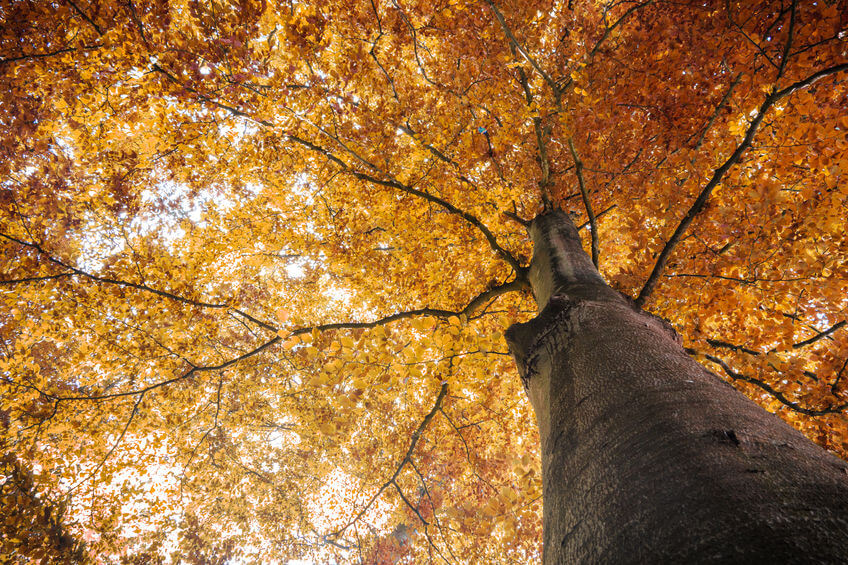
5. Are you cutting alone? Always take someone with you into the woods.
Having someone else around when you're cutting firewood could save your life.
6. Use a sharp chainsaw chain. A dull chain will cause you to force the saw through the tree.
Use a sharp chain and let the saw do the work.
7. Look for holes or rotten spots in the tree which could cause the trunk to snap or splinter.
If the tree is too rotten, it might be too dangerous to cut and should be left alone.
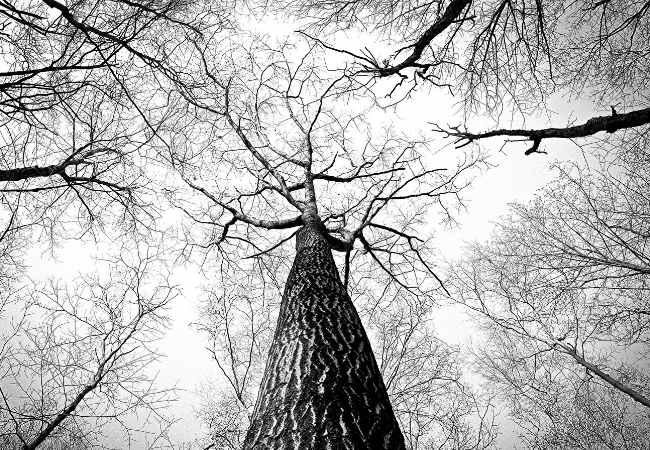
8. Using ropes and wedges can help direct the tree to the area you want it to fall.
9. Clear an area around the tree to allow you to quickly escape if needed.
Brush, small sapling and branches should be cleared away so you can have an escape route.
10. Be patient and don't rush. A lot of times we cut firewood quickly and try to cut as much as possible in a short period of time.
Being in a hurry is one of the most dangerous mistakes you can make. When we hurry we get careless.
Slow down, take your time and be safe when felling a tree.

About the Author
Obsessed with firewood, Nick is behind over 350+ of Firewood For Life's articles, as well as countless reviews, guides and YouTube videos to help readers like you reduce heating costs and create the perfect fire.

